Hello low-coders! My name is Oleg.In this article, I’ll share with you the perfect synergy between Zapier and Latenode that helped me slash my automation costs by 89 times and allowed me to extend data processing capabilities.
Let me take a step back and express my unconditional love for Zapier. With more than 6000 ready-to-use connections, it's the most user-friendly platform I've encountered. Therefore, when a new automation need arises, I’m confident that a few minutes on Zapier is enough to make it a reality.
However, the business processes I assist with often require a massive number of operations in my Zaps. In terms of Zapier “tasks” - internal credits - this can really hit the pocket.
Workaround for Numerous Operations
As you probably know, Zapier charges for each action item in your automation. This becomes especially bothersome when you loop a part of your workflow to run an action or set of actions more than once. For instance, if you have a list of email addresses to add to your contact list, each ‘Add Contact’ action adds only one contact. So, you're looping. And if you need to place 1,500 emails at once, be prepared to pay $39 on the Zapier starter plan.
Luckily, our team built a platform that doesn’t consider the number of actions in your automation. So, whenever such an extensive action workflow appears, follow this clever workaround:
- Make a Webhook POST request from your Zap and transfer the data.
- Process it in a low-code environment that doesn’t bill you for the number of actions.
- Send the result back to Zap as a webhook response.

Showcase: Data Processing on Latenode
Let’s try sending data to Latenode for the heavy lifting, then bringing the results back into Zapier to finish the job. Imagine having Google Sheets with sales data for the past half-month:
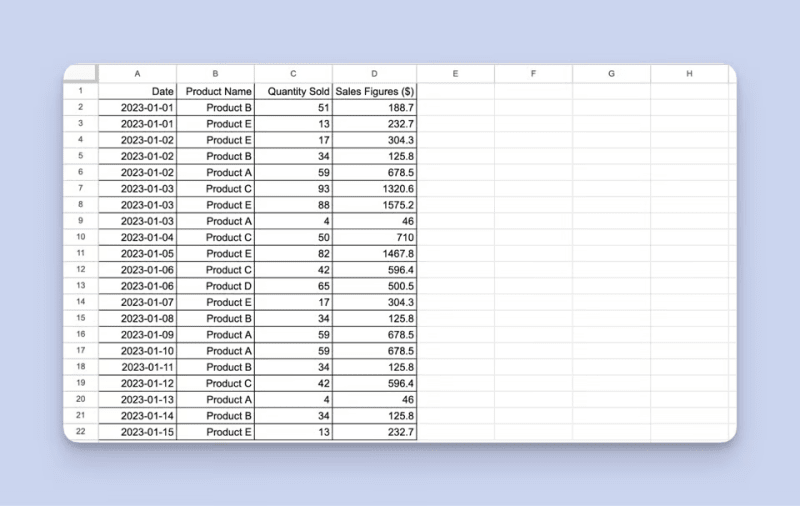
Step 1: Get Ready-to-Go Data on Zapier
We will use Zapier to get data from Google Sheets. We add the “Get Many Spreadsheet Rows” action to have a one-line output as a result of this step. Sending data in such a format requires only one task. Let’s focus on cost-efficiency.

Step 2: Create a New Scenario on Latenode
As shown in the previous screenshot, we put Latenode’s webhook URL, and send our output from Google Sheets there. To make it happen, we should:
- Create a new scenario on app.latenode.com (it’s entirely free).
- Add a new webhook trigger.
- Deploy your scenario or run once for a single test.
- Click on the webhook, get your URL and put it into Zapier.
After that, if your Zapier’s POST webhook is activated, Latenode will receive your data as shown below.
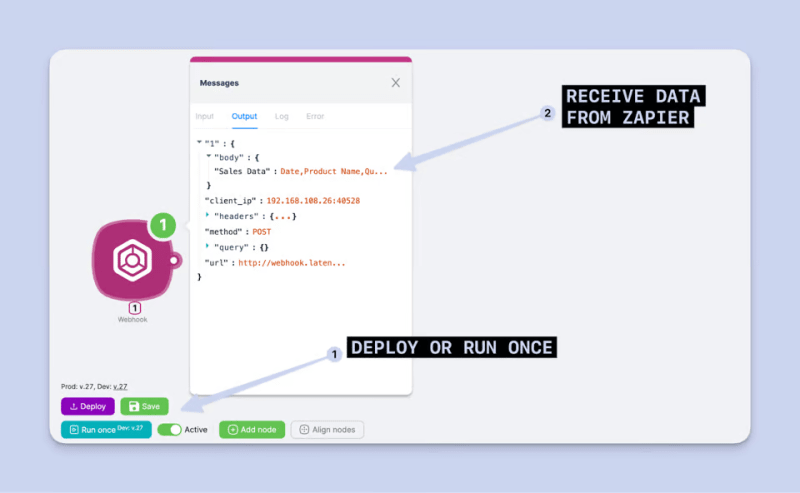
Now, the data is under your total control. To demonstrate Latenode's capability, I'll transform it using a JavaScript module with an in-built AI assistant that will do all the work for me.
Step 3: Use JavaScript AI to Transform the Data
As a showcase, let’s ask the AI to make a sum of Sales Figures ($) from our one-line Google Sheet data and see how it figures it out. To make this real, two steps are left:
- Add a JavaScript code module right after the webhook.
- Ask the AI assistant to parse data from the Sales Data object and make a sum of what’s needed. Our request looks like this:
Hey! Could you please parse data from the Sales Data object, make a sum of Sales Figures ($), and then return the sum back?
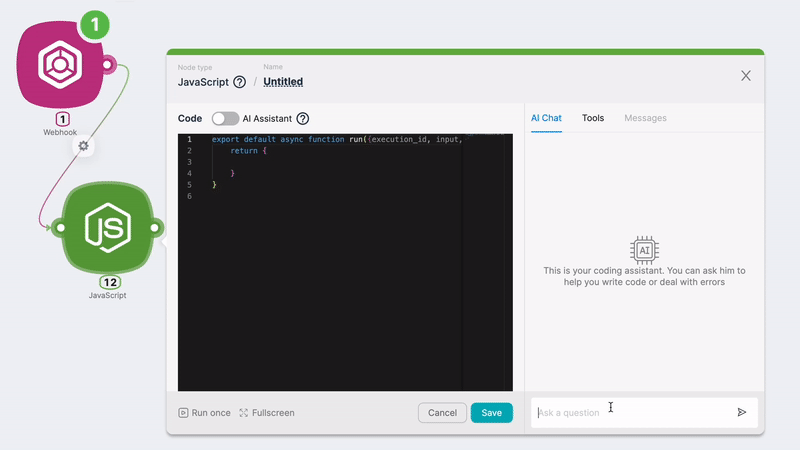
In a moment, your Latenode scenario calculates the sum of the “Sales Figures” column despite the one-line format this data has been received in.
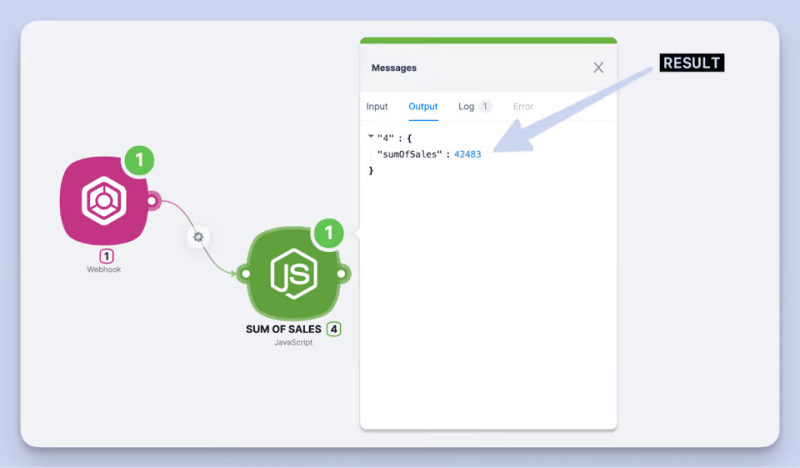
Moving forward, we can add another JavaScript module and ask:
Please add a script to my code that will convert the sumOfSales from USD to EUR using a free available API
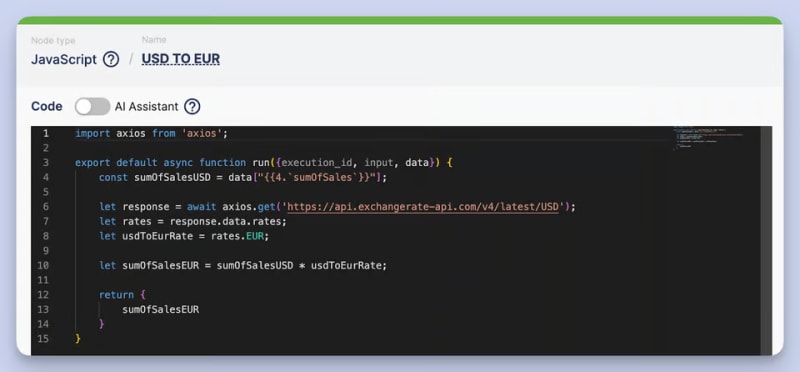
Latenode supports NPM packages, offering great flexibility in data processing.

Overall, our scenario looks like this. Ensure you end it with a webhook response, so the result of two operations will be returned to Zapier:
- Parse sales figures and sum them.
- Convert the sum from USD to EUR.
After that, Zapier’s webhook response receives new data that can be used further in your Zap. Our screenshot below demonstrates how we use the converted sum in a Slack channel.

That’s it! I hope this guide gives you a fresh perspective on automations and shows how everything can be optimized for cost-effectiveness and data flexibility with the help of a Zapier and Latenode bundle. By the way, the Latenode community on Discord is extremely supportive, so feel free to ask any questions and expect immediate help from the dev team there.
Automate on app.latenode.com, and stay tuned for more hacks!



Top comments (0)